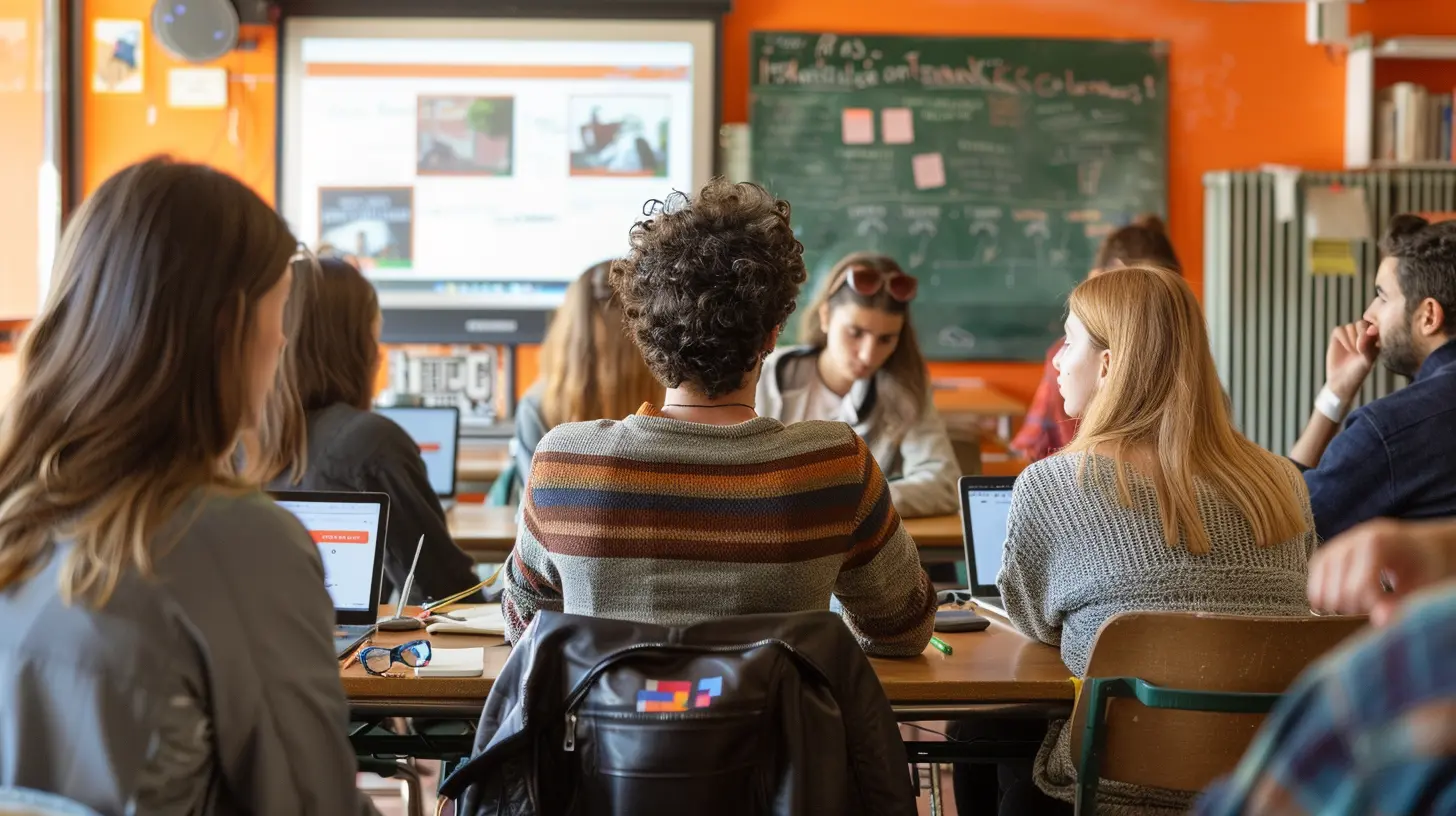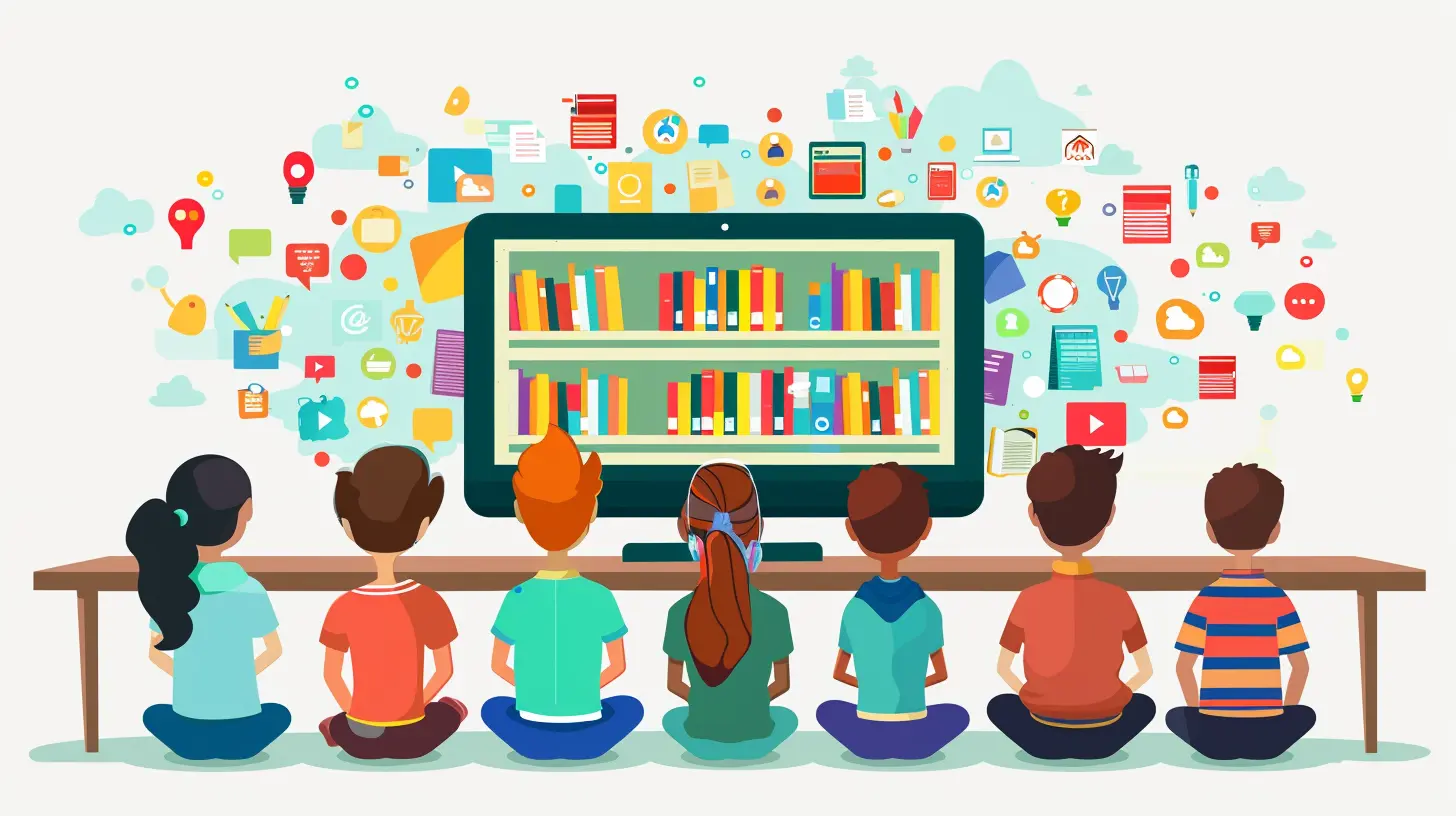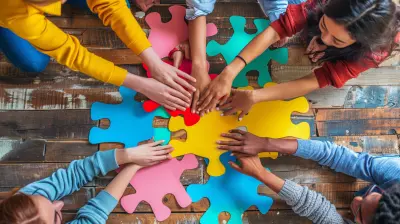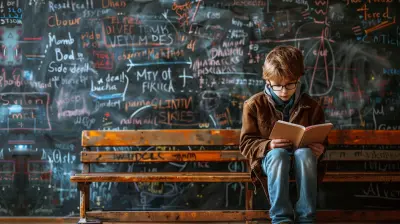Facilitating Group Projects in Blended Learning Courses
1 September 2025
Group projects in a blended learning environment — that sweet spot where online and face-to-face learning meet — can be a game-changer. When done right, they help students build collaboration skills, deepen understanding, and feel part of a learning community. But let’s be real: without the right planning, group work can quickly go south. Miscommunication, unequal participation, and unclear expectations aren’t just frustrating — they’re relationship killers (and grade killers too!).
In this article, we’ll dig deep into how educators can effectively facilitate group projects in blended learning courses. Whether you’re a newbie in the world of blended teaching or a seasoned pro looking for better strategies, you’ll find practical tips here to make group work sound less like chaos and more like harmony.
🌱 Why Group Projects Matter in Blended Learning
Let’s start with the “why.” Why even bother with group projects in a blended course?Group work mimics real-world scenarios. In most careers, working with others — some in-person, some remotely — is standard. So, setting students up for this dynamic during their learning years is like giving them a dress rehearsal before the big stage.
Also, we learn better socially. Think about the last time you had to explain something to a friend. Didn’t it help you understand it better yourself? That’s the magic of collaborative learning. It promotes critical thinking, empathy, and communication — all while making learning more meaningful.
And finally, blended learning offers flexibility. It combines the best of both worlds: face-to-face interaction and the freedom of online spaces. Group projects in this setting can benefit enormously from that duality — if we know how to guide them.
🧩 Unique Challenges of Group Projects in Blended Learning
Before we jump into solutions, let’s be honest about the pain points. Blended learning isn’t perfect — and neither are group projects.1. Uneven Participation
Some students go “ghost” online, while others might dominate in-person meetings. And guess who ends up doing most of the work? Yeah, not fair.2. Communication Gaps
Students may not be on the same page — literally. With some interactions happening online and others face-to-face, messages get lost in translation.3. Tech Trouble
Not everyone is a tech wizard. Some students struggle with tools like Google Docs, Slack, or Zoom. For them, “just hop on a video call” isn’t simple.4. Coordination Headaches
Finding a time when everyone’s available — across different time zones or schedules — feels like solving a Rubik's Cube in the dark.Addressing these issues takes more than hope and good vibes. It requires structure, guidance, and a little bit of empathy.
🛠️ Strategies for Facilitating Effective Group Projects
Now let’s get to the good stuff. Here’s how you can turn group projects in your blended course from a hot mess to a well-oiled machine.1. Start With Clear Expectations
Before your students even say hello to each other, you need to lay the groundwork.- Define the goal: What’s the project about, and why does it matter?
- Break it down: Include a timeline with milestones. Deadlines keep people accountable.
- Clarify roles: Assign or let teams choose roles (like leader, note-taker, presenter). This sets a tone of responsibility early on.
📝 Pro tip: Use a group contract. It’s exactly what it sounds like — a document where team members write out how they'll communicate, split tasks, and resolve conflicts. It makes things feel more official (and gets everyone on the same page, literally).
2. Use the Right Tools — and Make Sure Everyone Knows Them
Tech should be a bridge, not a barrier. Pick user-friendly tools — and more importantly, teach your students how to use them.Some favorites:
- Google Workspace: Docs, Slides, and Sheets for real-time collaboration.
- Trello or Asana: Great for task management and visualizing progress.
- Zoom or MS Teams: For virtual meetings.
- Padlet or Miro: For brainstorming and creative planning.
📚 Bonus tip: Create how-to videos or cheat sheets for the tools. That way, students aren’t Googling “how do I share a doc?” at midnight.
3. Blend Synchronous and Asynchronous Collaboration
Here’s the beauty of blended learning: you can mix real-time interaction with flexible scheduling.- Use synchronous sessions (live classes or meetings) for brainstorming and feedback.
- Let asynchronous work happen digitally — think discussion boards, shared docs, or recorded videos.
This way, fast thinkers can speak up in meetings, and deep thinkers can take their time writing out ideas. Everyone contributes in a way that suits them.
4. Offer Scaffolding Without Micromanaging
Think of group projects like building a house. Students need a blueprint, but they still want to choose the paint color.Offer them:
- Weekly check-ins: Not just “how’s it going?” but real progress updates.
- Mini-deadlines: Break the project into smaller parts – like research, outline, draft, and final product.
- Rubrics: Share how you'll grade each section. It demystifies the process and reduces surprises.
💡 Encourage self and peer assessments. It gives students a say, boosts accountability, and gives you more insight than what you can see on the surface.
5. Create a Culture of Psychological Safety
Students need to feel safe — emotionally and socially — to collaborate well. Nobody wants to share ideas if they fear judgement or conflict.As the instructor, model vulnerability:
- Admit when something’s confusing.
- Encourage questions.
- Celebrate effort, not just results.
And help students build trust through icebreakers, breakout rooms, or even just casual discussions. You’d be surprised how much a 10-minute “what’s your favorite movie?” chat can loosen people up.
🌈 Making Group Work Inclusive and Fair
Inclusion isn’t a checkbox — it’s a mindset. Make sure every student, regardless of background, personality, or tech access, has a voice.Here are some specific things you can do:
- Rotate roles so everyone gets a chance to lead and learn.
- Accommodate different learning styles. Visual learners might prefer flowcharts, while verbal learners might love discussions.
- Check in privately with struggling students. Some won’t speak up publicly but desperately need support.
Remember: fairness isn’t about treating everyone the same — it’s about giving everyone what they need to succeed.
📊 Assessing Group Projects Meaningfully
Grading group work can be a landmine if you’re not careful. How do you make it fair when one person does 80% of the work?Here’s a balanced approach:
- Mix individual and group grades. Maybe 60% for the group product, and 40% based on individual contributions.
- Use peer evaluations. They help uncover invisible labor (like the student who coordinated all the meetings).
- Focus on process as much as product. Sometimes the journey was the real win — especially when students reflect on what they learned.
📈 Allow room for reflection. A simple “What did you do? What did you learn? What would you do differently?” written response lets students process the experience and gives you insight you wouldn’t get otherwise.
🚀 Real Talk: What Students Need From You
At the end of the day, students need more than a list of instructions — they need a guide, a mentor. Someone who's not just directing traffic but cheering them on.Be that human in their blended learning journey.
- Be approachable. Reply to emails. Show up to office hours.
- Be flexible. Life happens — especially in online formats.
- Be real. If a project is tough, acknowledge it. Show that you care.
You’re not just teaching a subject. You’re teaching collaboration, resilience, empathy. And those lessons stick around way longer than a final grade.
🧭 Final Thoughts
Facilitating group projects in blended learning courses doesn’t have to be a nightmare. With the right intentions, tools, and structure, you can transform group work into a rewarding and empowering experience for everyone involved.It’s not about being perfect — it’s about being intentional. Even small tweaks in how you design, support, and assess group projects can make a huge difference.
So next time you assign a group project, remember: you’re not just giving out work. You’re creating a mini-lab for life skills, creativity, and connection. And that’s something truly worth building.
all images in this post were generated using AI tools
Category:
Blended LearningAuthor:

Bethany Hudson
Discussion
rate this article
1 comments
Scarlett McKinley
This article adeptly outlines strategies for facilitating group projects in blended learning environments. By leveraging technology and promoting collaboration, educators can enhance student engagement and learning outcomes. The insights on communication tools and team dynamics are particularly valuable for fostering a supportive online and in-person learning experience.
September 18, 2025 at 3:28 AM

Bethany Hudson
Thank you for your thoughtful feedback! I'm glad you found the insights on technology and collaboration valuable for enhancing student engagement in blended learning environments.


